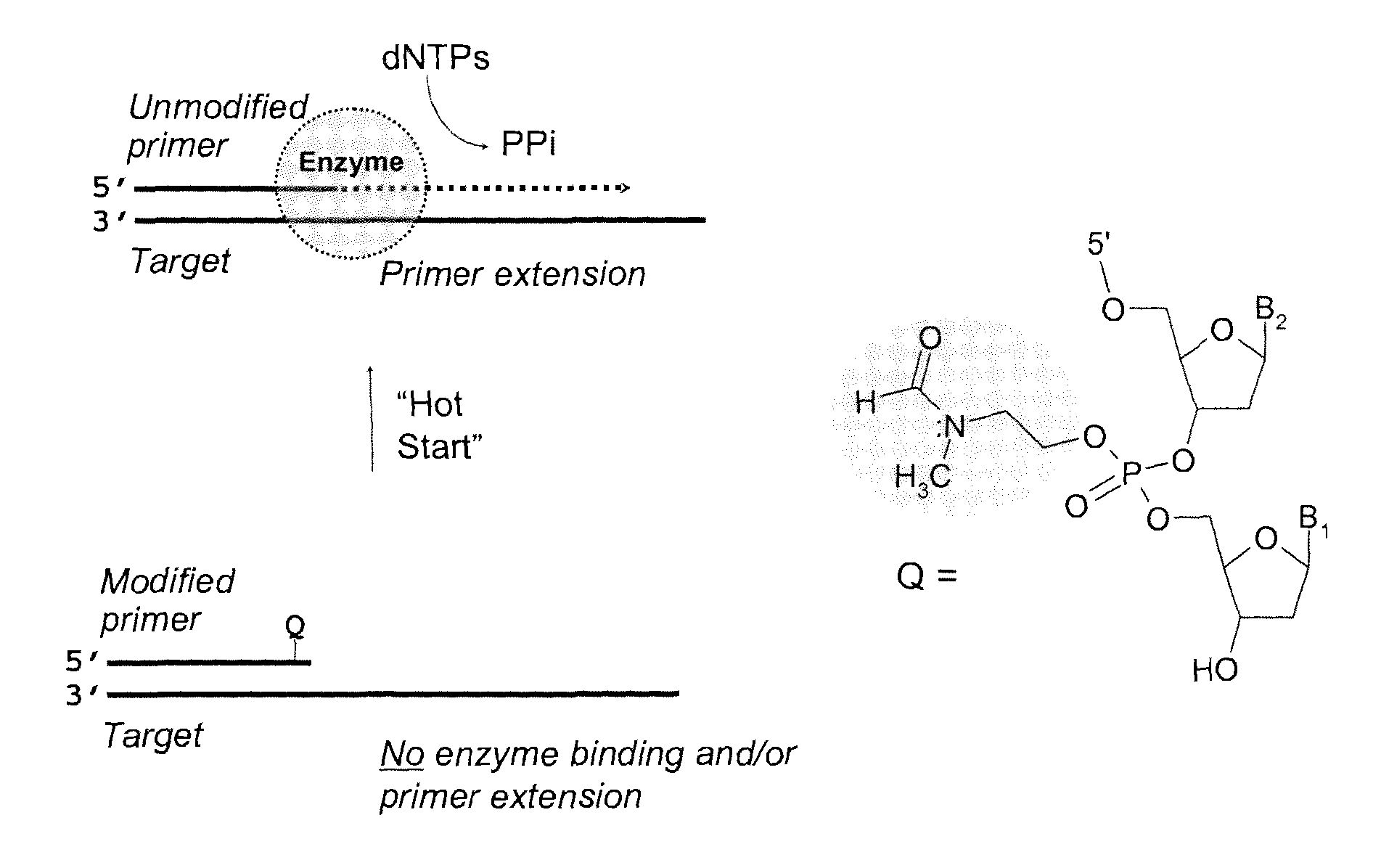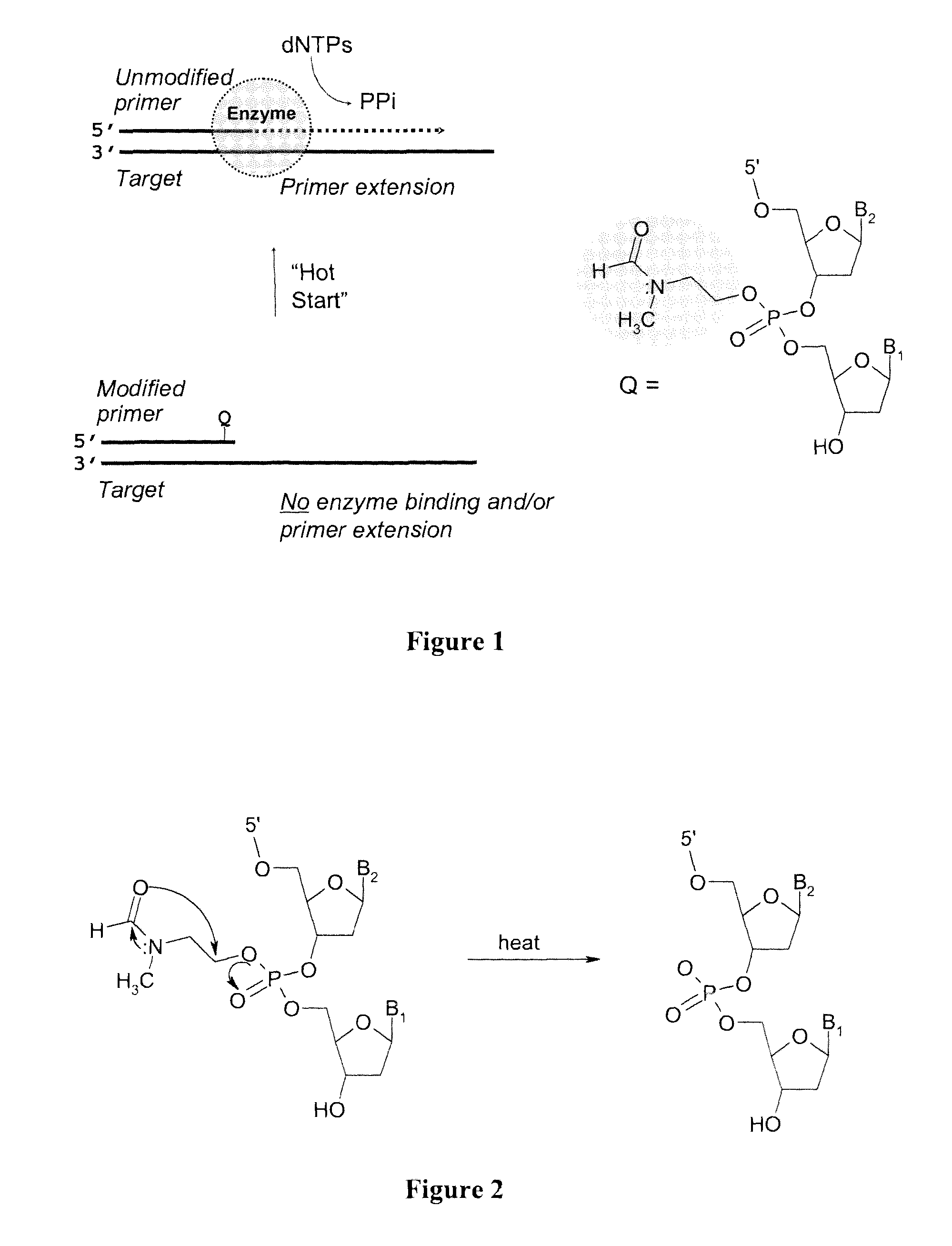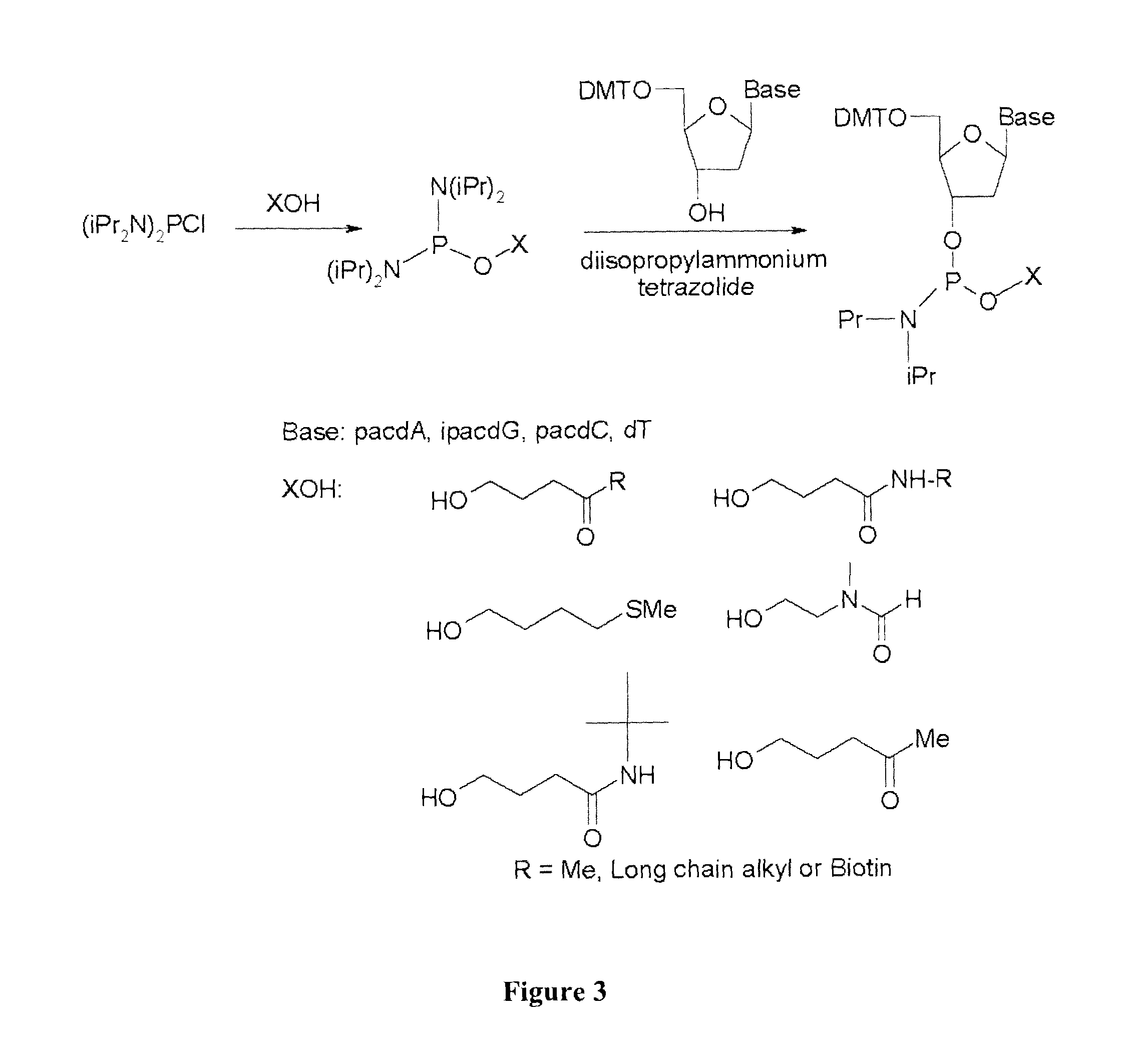Phosphotriester-modified oligonucleotide primers for nucleic acid amplification
a technology of phosphotryter and oligonucleotide primers, which is applied in the field of methods and compositions for amplifying nucleic acids, can solve the problems of significant reduction of the efficiency of the desired sequence amplification, the difficulty of high-sensitivity analytical pcr schemes, and the increased chance of spurious amplification products in multiplex pcr
- Summary
- Abstract
- Description
- Claims
- Application Information
AI Technical Summary
Benefits of technology
Problems solved by technology
Method used
Image
Examples
example 1
Synthesis of Nucleoside Phosphoramidites
[0213]A first step to synthesizing a modified nucleoside phorphoramidite is to react bis (diisopropylamino) chlorophosphine with the alcohol precursor of the desired modification group. The resultant monoesterified product is reacted with the appropriately protected nucleoside in the presence of diisopropylammonium tetrazolide as a catalyst to generate the modified nucleoside phosphoramidite. Although N-(2-hydroxyethyl) phthalimide, 4-oxo-1-pentanol, and 4-methylthio-1-butanol alcohols are commercially available, 3-(N-tert-butylcarboxamido)-1-propanol can be prepared according to procedure published by Wilk, A., et al, 67 J. Org. Chem., 6430-38 (2002)
[0214]In anticipation of low stability of the phosphotriester fragment in the synthesized oligonucleotide primers, the nucleoside bases were protected with either an ultra mild or traditional protecting groups, where the ultra mild base protecting group included phenoxyacetyl for adenine and cytos...
example 2
Kinetic Conversion of a PTE Modified Oligonucleotide to the Corresponding PDE Sequence
[0218]The kinetics of deprotection of the 3′-phosphotriester (PTE) modified tetranucleotide sequences to the corresponding phosphodiester (PDE) sequence were investigated at “neutral” pH (in mixture of acetonitrile triethylammonium acetate, pH 7.2) or in PCR buffer (pH 8.4 at 25° C.) at 20° C., 50° C., and 95° C. In both buffers, similar deprotection kinetics were evident for the PTE-containing oligonucleotide primers.
[0219]The t1 / 2 for the conversion of the PTE-modified oligonucleotide primer to the corresponding PDE sequence was determined to range from >1 minute to 10 minutes at 95° C. for the OXP, MTB, and TBCA tetranucleotide 3′-phosphotriester derivatives. At a lower temperature (50° C.), the deprotection kinetics were slower, with t1 / 2 ranging from 10 to 105 minutes. At room temperature (20° C.), the t1 / 2 was between 3 and >100 hours. For suitable application in Hot Start PCR technologies, t...
example 3
Large-Scale Synthesis of Phosphoramidites
[0220]For the scale-up synthesis, and preparation of multi gram quantities (5 g starting scale) of the protected 3′-phosphoramidites of dA, dG, dC and dT, using the two step-one pot procedure shown in FIG. 3. As before, ultra mild protecting groups were used for exocyclic amino group of the nucleoside bases. The 5′-DMT protected nucleoside 3′-phosphoramidites were isolated by silica gel chromatography in 50-70% overall yield and as a solid were shown to be stable at room temperature for at least two weeks. It is anticipated that the nucleoside 3′-phosphoramidite should be stable for low temperature storage (between about −70° C. to −100° C.) for at least one year.
PUM
| Property | Measurement | Unit |
|---|---|---|
| temperature | aaaaa | aaaaa |
| temperatures | aaaaa | aaaaa |
| temperatures | aaaaa | aaaaa |
Abstract
Description
Claims
Application Information
 Login to View More
Login to View More - R&D
- Intellectual Property
- Life Sciences
- Materials
- Tech Scout
- Unparalleled Data Quality
- Higher Quality Content
- 60% Fewer Hallucinations
Browse by: Latest US Patents, China's latest patents, Technical Efficacy Thesaurus, Application Domain, Technology Topic, Popular Technical Reports.
© 2025 PatSnap. All rights reserved.Legal|Privacy policy|Modern Slavery Act Transparency Statement|Sitemap|About US| Contact US: help@patsnap.com



